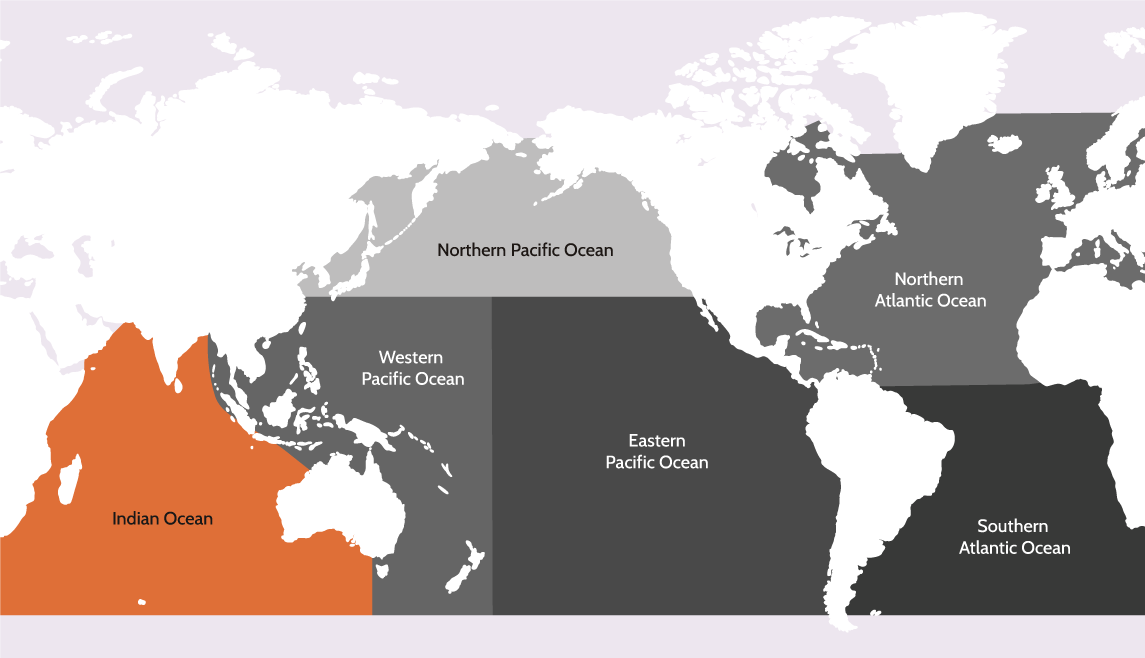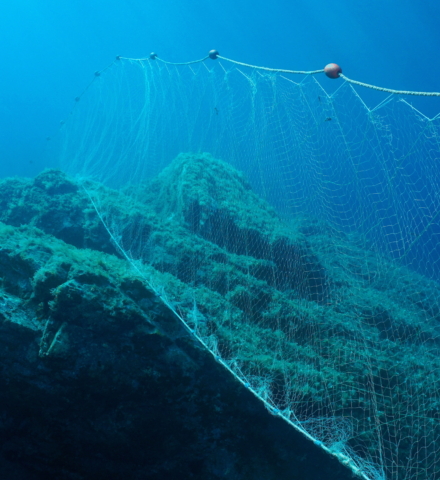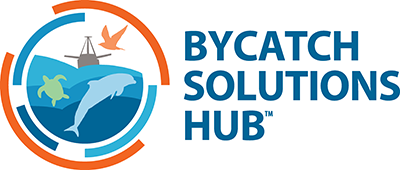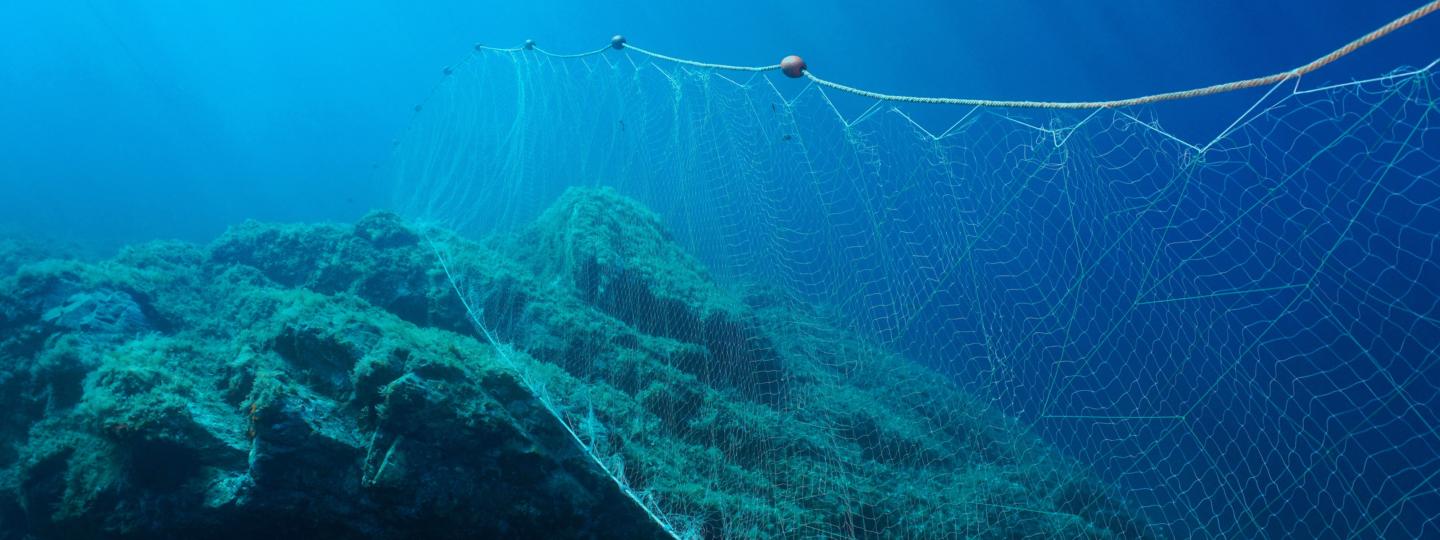Gillnets
Indian Ocean
Gillnets are designed to trap fish that swim into them, which become increasingly entangled as they fight to get out. They are either tethered into the substrate (set gillnets) or attached to buoys and float at a specific depth (drift gillnets).


Target Species
Groundfish
Tuna
Snow Crab
Bycatch Species
Marine Mammals
Sea Turtles
Sharks and Rays
Solutions
View allFunding Opportunities
View allDescription
Iluminar el Mar uses small, affordable green LED lights attached to fishing nets to reduce the accidental capture of threatened and endangered species such as sea turtles, sharks, rays, dolphins, and whales. This issue, known as fisheries bycatch, is one of the leading threats to marine biodiversity. The lights work by making nets more visible to these species, which have different sensory abilities compared to target bony fish, allowing fishers to maintain their catch without harming vulnerable marine life.
Trials from Phase I in coastal Ecuador showed impressive results, reducing bycatch by 58 percent for sea turtles, 45 percent for sharks, 50 percent for rays, and 73 percent for dolphins and whales. Protecting these keystone species helps maintain healthy oceans—turtles regulate jellyfish populations, while sharks keep the food chain in balance, supporting fish stocks and the livelihoods of coastal communities.
The approach goes beyond technology, working closely with local fishers through workshops and collaboration, building shared knowledge about the importance of these species and co-designing solutions that fit local realities. Also creating market incentives for fish caught using this method, helping fishers earn more while protecting marine ecosystems.
In Phase II, the Project will publish Phase I results, fine-tune the light configurations with fisher feedback, develop a national implementation plan, and roll out the technology on 100 artisanal gillnet vessels across three ports. This will prevent the accidental capture of an estimated 973 sea turtles, 420 mobula rays, 450 dolphins and whales, and 3,613 sharks in just one fishing season. Over five years, the impact grew to 4,866 turtles, 2,100 rays, 2,248 dolphins and whales, and 18,063 sharks.
By reducing bycatch, Iluminar el Mar directly addresses a critical conservation challenge with a simple yet effective solution. The project combines tested innovation with deep local engagement and has the potential to be replicated in small-scale fisheries around the world. It offers a powerful path forward for healthier oceans and stronger coastal communities.
Beneficiary: The Leatherback Project and Mare Nostrum
- Option A: Testing of new design with Pilot Fishers & Outreach (Two Year) $78,050 USD
- Option B: Improved LED Light Technology $40,000 USD
Description
Research suggests that over 300,000 whales and dolphins die annually due to entanglement in fishing gear, with additional unknown numbers also entangled in marine debris. This can have devastating, long-term conservation impacts on those populations that are already threatened, in some cases critically. In response to these growing concerns, the International Whaling Commission (IWC) launched a Global Whale Entanglement Response Network (GWERN) in 2011. The immediate aim of the program was to build safe and effective entanglement response capability around the world. The long-term goal is to prevent entanglements incidence globally.
The program is a partnership with the Center for Coastal Studies (CCS) in Provincetown, Massachusetts, US considered one of the global leaders in entanglement response. It is led by Technical Advisors who work for both CCS and the IWC, supported by an Expert Panel drawn from countries with long-standing and well-tested approaches to entanglement response.
With assistance from this global expert group, a Best Practice Guidelines and a two-day entanglement response training package has been development and is in need of further support. The training workshop includes classroom study, with information on data collection, relevant regulations, and regional cetacean identification, followed by on the water, hands-on disentanglement exercises. Since 2012, these training workshops have been delivered across five continents, reaching over 1,700 participants from more than 43 countries.
Funding to support this program includes equipment costs for disentanglement kits and trainer sponsorship consisting of flights, subsistence and a $205/day trainer fee. Additionally, a smaller funding package to support disengagement kit supplies alone is available.
Beneficiary: International Whaling Commission in partnership with Center for Coastal Studies
- Funding to support equipment costs for disentanglement kits and trainer sponsorship $18,944 USD
Description
In California, Experimental Fishing Permits (EFP’s) have been granted to several fishing for swordfish and bluefin tuna using sustainable deep-set buoy gear (DSBG). Since 2023, DSBG has been a low-bycatch alternative to traditional swordfish gear, such as pelagic longlines and drifting gillnets, which can negatively impact sea turtles, sharks and seabirds. DSBG reduces bycatch by setting beneath the thermocline, where non-targeted species are uncommon. However, it can be challenging for fishers to relocate their DSBG, and losing gear is a concern with inclement weather. Lost gear can become ghost gear, which could indiscriminately fish both target and non-target species. Blue Ocean Gear provides Smart Buoy technology for tracking and monitoring deployed gear. In 2023, with funding from Santa Monica Seafood and support from SFP, 2 DSBG vessels were provided with Smart Buoys to track their gear. All DSBG were successfully relocated, and Smart Buoys enabled more effective day-to-day operations for the fishers.
Based on this success, this project will be expanded to include outfitting two additional DSBG vessels with Smart Buoy technology. The expansion will also include training for fishers and a satellite data plan for an additional vessel already equipped with Smart Buoys. The initial training and ongoing support will be conducted by Blue Ocean Gear, both in-person and virtually, as successfully done during the past project. The additional hardware will include 10 Smart Buoys and 1 Wireless Charger per vessel. The software plan includes the Iridium subscription per buoy, as well as access to buoy data via the mobile app, web app, and TimeZero plotter.
Click "I'm Interested" to contact the Bycatch Solutions Hub for more details.
Beneficiary: Blue Ocean Gear
- Fully Outfit 2 DSBG Vessels-Funded $27,750 USD
- Fully Outfit 2 Additional DSBG Vessels plus Training and Satellite Plan $32,000 USD

